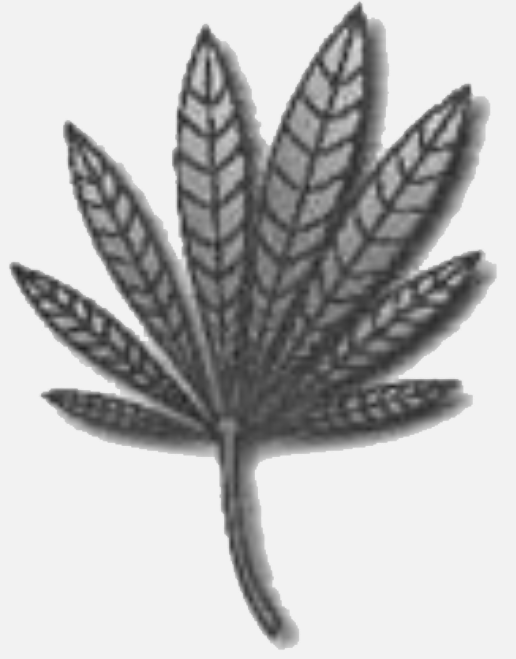How is a cork formed in the plant ? What is its commercial source ?
Step-by-Step Solution:
1. Understanding Cork Formation:
- Cork is formed from a specific type of tissue in plants known as cork cambium or phellogen. This tissue is responsible for producing cork cells.
2. Cell Division:
- The cork cambium undergoes a type of cell division called periclinal division. This means that the cells divide parallel to the surface of the plant.
3. Formation of Cork and Secondary Cortex:
- When the cork cambium divides, it produces two types of cells:
- Outer Cells: The cells that are cut towards the outside become cork cells. These cells are suberized (they develop a protective layer called suberin) and eventually die, forming the protective cork layer.
- Inner Cells: The cells that are cut towards the inside form the secondary cortex, which is a layer of living cells.
4. Commercial Source of Cork:
- The primary commercial source of cork is the cork oak, scientifically known as Quercus suber. This tree is medium-sized and evergreen, and it is predominantly harvested for its bark, which is processed into cork products like wine bottle stoppers and other uses.
Summary:
Cork is formed by the cork cambium through periclinal cell divisions, producing cork cells on the outside and secondary cortex on the inside. The main commercial source of cork is the cork oak (Quercus suber).
- Cork is formed from a specific type of tissue in plants known as cork cambium or phellogen. This tissue is responsible for producing cork cells.
- The cork cambium undergoes a type of cell division called periclinal division. This means that the cells divide parallel to the surface of the plant.
- When the cork cambium divides, it produces two types of cells:
- Outer Cells: The cells that are cut towards the outside become cork cells. These cells are suberized (they develop a protective layer called suberin) and eventually die, forming the protective cork layer.
- Inner Cells: The cells that are cut towards the inside form the secondary cortex, which is a layer of living cells.
- The primary commercial source of cork is the cork oak, scientifically known as Quercus suber. This tree is medium-sized and evergreen, and it is predominantly harvested for its bark, which is processed into cork products like wine bottle stoppers and other uses.
Cork is formed by the cork cambium through periclinal cell divisions, producing cork cells on the outside and secondary cortex on the inside. The main commercial source of cork is the cork oak (Quercus suber).
Topper's Solved these Questions
- SAMPLE QUESTION PAPER 2 BOOK - ICSECHAPTER - SAMPLE QUESTION PAPER 2 EXERCISE - PART-II SECTION - B
9 Videos
- SAMPLE QUESTION PAPER 2 BOOK - ICSECHAPTER - SAMPLE QUESTION PAPER 2 EXERCISE - PART-II SECTION - C
6 Videos
- SAMPLE QUESTION PAPER 2 BOOK - ICSECHAPTER - SAMPLE QUESTION PAPER 2 EXERCISE - PART-II SECTION - C
6 Videos
- RESPIRATION IN PLANTSBOOK - ICSECHAPTER - RESPIRATION IN PLANTSEXERCISE - NCERT EXERCISES WITH ANSWER (DIFFERENTIATE BETWEEN)
6 Videos
- SAMPLE QUESTION PAPER 3BOOK - ICSECHAPTER - SAMPLE QUESTION PAPER 3EXERCISE - SECTION - C
6 Videos
Similar Questions
How is benzene prepared in the laboratory and on commercial scale ? How does it react with ozone
View SolutionName the process of asexual reproduction shown by yeast. What type of living being is yeast? What is its commercial importance?
View SolutionHow is ozone formed in the upper atmosphere? State its importance. What is responsible for its depletion ? Write one harmful effect of ozone depletion.
View SolutionWhich of the following parts of the plant is used as commercial wood ?
View SolutionHow is acetyl CoA formed? What is its role in citric acid cycle?
View Solution(a) Name the source plant of heroine drug. How is it obtained form the plant?
(b) Write the effect of heroin on the human body.
View SolutionWhat is soot? How is it formed?
View SolutionGiven leaves are of a plant which is a source of :

View SolutionFirst transgenic plant released for commercial use was
View SolutionWhich of the following effects of auxins on plants is the basis for their commercial application?
View Solution
